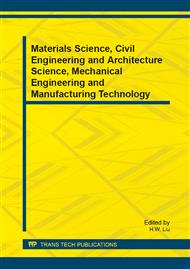p.94
p.98
p.102
p.106
p.111
p.115
p.121
p.125
p.129
A Study on Modeling of CO2 Weld Seam Forming Quality
Abstract:
CO2 welding technology is widely used nowadays, because the work environment is very bad, weld automation technology is urgently needed. To control the weld quality automatically, weld sensors should be first used to obtain information that could reflect the weld quality. This paper used arc and visual sensors to obtain the electrical and weld pool image of CO2 weld process, and signal processing method was used to obtain the signal features of the information. Then neural network method was used to model the process, experiment results showed that the method could effectively predict the weld seam forming.
Info:
Periodical:
Pages:
111-114
Citation:
Online since:
January 2014
Authors:
Keywords:
Price:
Сopyright:
© 2014 Trans Tech Publications Ltd. All Rights Reserved
Share:
Citation:


